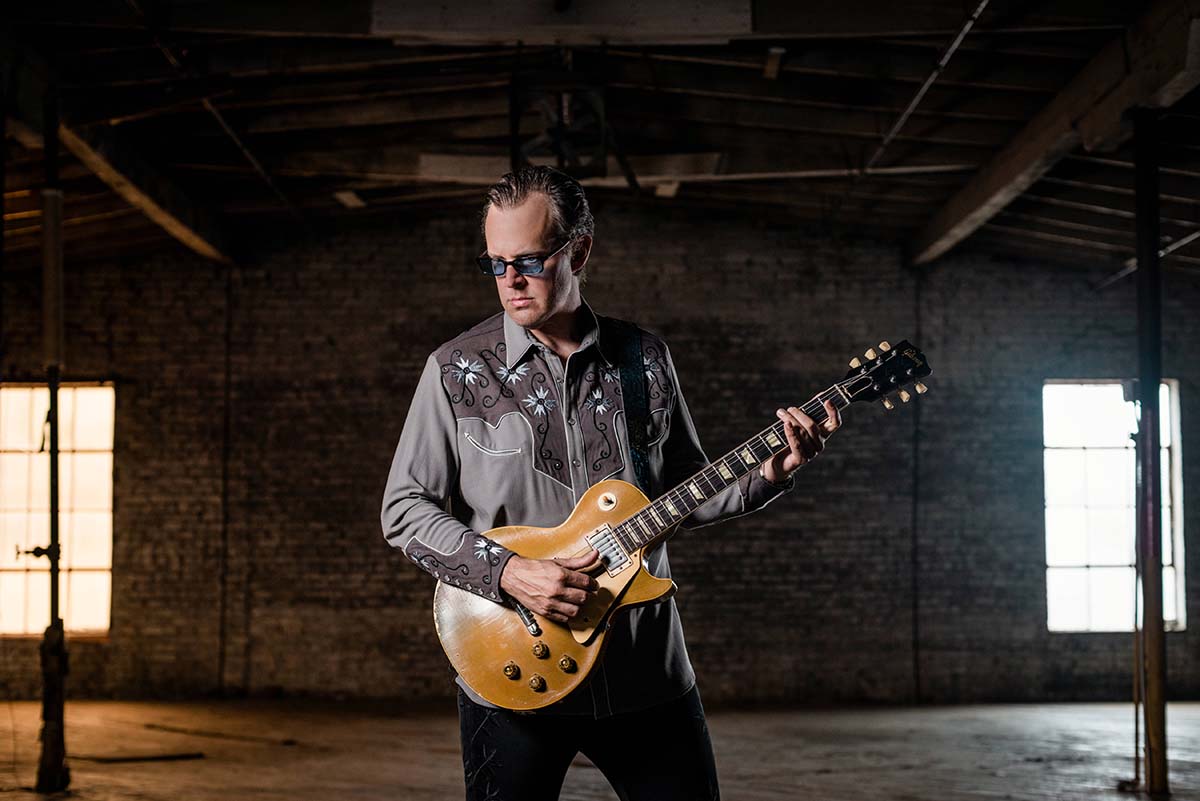Joe Bonamassa: “I can play a Fender amp and a Fender guitar, it sounds like me. I can play a Gibson amp and a Gibson guitar. It sounds like me. Moving the needle isn’t happening anymore“
Is Joe Bonamassa retiring from gear collecting?

It is one of the truisms of playing the guitar: the more experienced you get, the better you get, the more you sound like yourself no matter which electric guitar or guitar amp you choose to play through.
But for an inveterate guitar collector and the world's preeminent blues superstar Joe Bonamassa, this poses a question that is nigh-on existential: is it worth collecting some of the world's rarest guitars and amps when you sound like yourself no matter what?
In a recent interview with Guitar, Bonamassa admitted that the law of diminishing marginal returns was inevitable when he has been playing professionally for so long. Eventually, no matter what he chooses from the Nerdville archives to tour with, it's going to sound like Joe Bonamassa.
“I can dig something out of the vault and you’re like, ‘Holy shit, here’s a real Bluesbreaker combo, here’s a real ’59 Les Paul,’“ he said. “But, blindfolded, you’re gonna go, ‘It sounds like Joe wanking away again’. Unfortunately, as I get older, nothing moves the needle. Nothing.“
Bonamassa says this phenomenon applies to all types of guitars. Speaking about his recent rediscovery of the delights of the Gibson SG, he said it was a question of arriving at the point “where you play what you’ve got“.
“I can play a Fender amp and a Fender guitar, it sounds like me,“ he said. “I can play a Gibson amp and a Gibson guitar. It sounds like me. Moving the needle isn’t happening anymore.”
Speaking to MusicRadar last year, Bonamassa cautioned against buying gear online on the strength of a demo video alone, arguing that the talent of the player demoing the gear could give you a false impression of how it would sound when you got the gear home.
Want all the hottest music and gear news, reviews, deals, features and more, direct to your inbox? Sign up here.
“I understand how people sell a lot of pedals, guitars and amps based on the Instagram one or two-minute video,“ he said. “And that’s cool. But what they don’t realise is that they guy who is doing the demo is a really good player. He’d sound the same on anything! ‘It doesn’t sound that way when I play it…’ Well, that’s something you need to address in your own playing to get it to that level where it does sound how you want it to sound.”

Perhaps this moment comes for all musicians after a certain amount of time. In his conversation with Guitar, Bonamassa suggested as much.
Listen to Tommy Emmanuel – you can give him anything! You can give him a Yamaha that costs $150 or a 000-45 but it doesn’t matter. The tactility of his playing is going to dictate what it sounds like
Referencing Malcolm Gladwell's Outliers – in which the author/journalist wrote that required 10,000 hours of practice to attain a world-class, elite level at music, sports, or any activity – Bonamassa said there were many other professionals who had played for so long their style impressed itself on whatever they played.
“Listen to Tommy Emmanuel – you can give him anything! You can give him a Yamaha that costs $150 or a 000-45 but it doesn’t matter,“ he said. “The tactility of his playing is going to dictate what it sounds like. And I think that happens to a lot of folks as they get into their 40s and they’ve done this their whole lives.”

You will be able to hear what all those hours has done for Bonamassa on his new studio album, Time Clocks, which is released on 29 October through Provogue/Mascot Label group in the UK, J&R Recordings in the US.
The album, which is available to preorder now, saw Bonamassa decamped in New York City's Germano Studios/The Hit Factory, for what he referred to as “his subway album“ – a stripped back record in which he hit the studio with just a few choice items of gear.
This minimalist approach seems in keeping with his gear epiphany – if nothing is moving the needle, no need for four guitars when two will do. But it's not just about sounding the same. The feel of the instrument is important, too. And whether it is fighting his '51 Nocaster or reacquainting himself with his '63 SG (one of some 30 SGs he owns), there's something enduring about the appeal of switching up guitars, even if the audience can't tell the difference.
Jonathan Horsley has been writing about guitars and guitar culture since 2005, playing them since 1990, and regularly contributes to MusicRadar, Total Guitar and Guitar World. He uses Jazz III nylon picks, 10s during the week, 9s at the weekend, and shamefully still struggles with rhythm figure one of Van Halen’s Panama.

